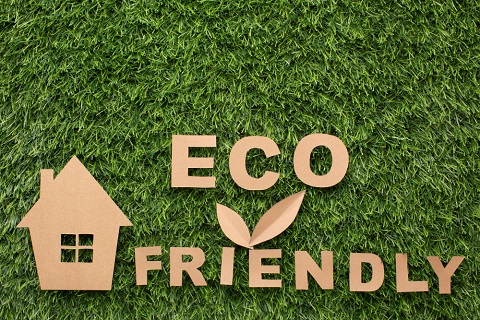In an era where environmental consciousness is on the rise, more homeowners are opting for eco-friendly renovations to reduce their carbon footprint and create sustainable, stylish living spaces. Transforming your home into an environmentally responsible haven doesn’t mean sacrificing style; in fact, it opens up a world of innovative and aesthetically pleasing options. In this comprehensive guide, we’ll explore various aspects of eco-friendly renovations, from sustainable materials to energy-efficient technologies, helping you create a home that aligns with your values and looks stunning.
Choosing Sustainable Materials:
Bamboo Flooring:
Start your eco-friendly renovation journey by selecting sustainable flooring options such as bamboo. Bamboo is a fast-growing grass that matures quickly, making it a renewable resource. Additionally, it boasts durability and a unique aesthetic appeal, making it an ideal choice for eco-conscious homeowners.
Reclaimed Wood:
Consider incorporating reclaimed wood into your renovation project. Salvaged from old barns, factories, or other structures, reclaimed wood not only adds character to your home but also helps reduce the demand for new timber, promoting sustainable forestry practices.
Recycled Glass Countertops:
Upgrade your kitchen with recycled glass countertops. These countertops are made from recycled glass bottles and other glass waste, diverting materials from landfills. They come in a variety of colors and patterns, offering a stylish and environmentally friendly alternative to traditional countertop materials.
Energy-Efficient Appliances and Lighting:
Energy Star Appliances:
Invest in Energy Star-rated appliances for your kitchen and laundry room. These appliances meet strict energy efficiency guidelines, helping you reduce your energy consumption and lower utility bills while minimizing your environmental impact.
LED Lighting:
Light up your home with energy-efficient LED bulbs. LED lights use significantly less energy than traditional incandescent bulbs and last much longer, reducing the frequency of replacements. Consider installing smart lighting systems that allow you to control and customize your home’s lighting for optimal energy efficiency.
Water Conservation Practices:
Low-Flow Fixtures:
Upgrade your bathroom with low-flow toilets, faucets, and showerheads. These fixtures are designed to use less water without sacrificing performance, helping you conserve water and reduce your home’s environmental impact.
Rainwater Harvesting System:
Consider installing a rainwater harvesting system to collect and store rainwater for non-potable uses, such as watering your garden. This sustainable practice reduces reliance on municipal water sources and promotes water conservation.
Renewable Energy Sources:
Solar Panels:
Harness the power of the sun by installing solar panels on your roof. Solar energy is a clean and renewable source of power that can significantly reduce your reliance on traditional grid electricity, leading to both cost savings and environmental benefits.
Wind Turbines:
If suitable for your location, consider incorporating small-scale wind turbines to generate clean energy. Wind power can be a viable option for homeowners looking to diversify their renewable energy sources.
Green Roof and Walls:
Green Roof:
Transform your roof into a living space by installing a green roof. This involves growing vegetation on your roof, providing insulation, reducing stormwater runoff, and improving air quality.
Vertical Gardens:
Enhance your home’s aesthetics and air quality by adding vertical gardens to your interior or exterior walls. These living walls not only contribute to sustainability but also create a unique and visually appealing atmosphere.

Waste Reduction and Recycling:
Recycling Station:
Designate a recycling station in your home to encourage proper waste disposal. Separate materials like paper, plastic, and glass to facilitate recycling and minimize the amount of waste sent to landfills.
Upcycling Furniture:
Instead of discarding old furniture, consider upcycling and repurposing items to give them a new life. This not only reduces waste but also adds a personal touch to your home decor.
Conclusion:
Embarking on an eco-friendly renovation journey is a rewarding endeavor that allows you to create a sustainable and stylish home. From choosing sustainable materials to incorporating energy-efficient technologies, every decision you make contributes to a greener and healthier living space. By embracing these practices, you not only reduce your environmental impact but also inspire others to follow suit. Remember, a sustainable home is not just a trend; it’s a commitment to a better, more environmentally conscious future.

